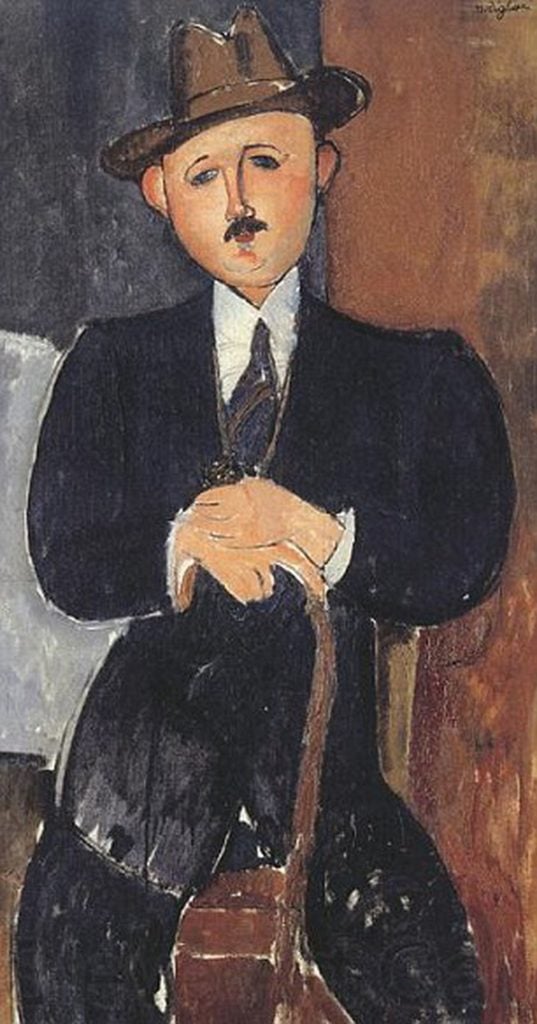Law & Politics
Judge Revives Case Against the Nahmad Family Over Allegedly Looted Modigliani
The case had been dismissed by a lower court in 2015.

The case had been dismissed by a lower court in 2015.

Sarah Cascone

A long-running legal battle over Seated Man with Cane, a 1918 Amedeo Modigliani painting allegedly stolen by the Nazis, has been revived. The lawsuit—one of the most high-profile restitution cases in recent years—has ensnared one of the world’s most prominent collecting families and shed light on the use of shell companies to hold art. It came under renewed scrutiny after the release of the Panama Papers.
Now, a Manhattan appeals court has ruled that Philippe Maestracci, the grandson of a French antiques dealer, can proceed with a 2015 lawsuit to reclaim the work, filed against the Nahmad family, a prominent art-dealing dynasty based in Monaco and New York.
Maestracci has been fighting to gain possession of Man With a Cane, which court documents say is worth an estimated $25 million, since 2011. He argues that the work was taken from his grandfather Oscar Stettiner’s antiques shop by Nazis during the Nazi occupation of Paris.
The appeals court decision, released on November 2, reverses a 2015 ruling from a lower court that dismissed the suit on grounds that Maestracci, a French citizen, did not have jurisdiction to sue in New York. (The development was first reported by the New York Law Journal.) The appellate panel found that Maestracci could follow an “alternative procedure,” filing documents demonstrating proof of French inheritance rights. That means he can sue on his own behalf, without a court-appointed administrator.
The panel also found that under the newly passed Holocaust Expropriated Art Recovery Act, the statute of limitations for the case had not yet expired.
According to Maestracci, Nazis stole the canvas from his grandfather and sold it in July 1944. Stettiner returned to Paris after the war and sued for the work’s return. Although the court ruled in his favor in 1947, the new owner, Jean van Der Klip, claimed he had already sold it to an unknown American officer. (“That’s an easy lie to make, because you can’t verify that one way or another,” Maestracci’s lawyer, Phillip Landrigan of Landrigan & Aurnou, of White Plains, New York, told artnet News.)
When the painting resurfaced at Christie’s London in 1996, it was sold by van Der Klip’s daughter for $3.2 million to the International Art Center, S.A. The organization was revealed last year in the Panama Papers as a shell company for David Nahmad, the patriarch of a powerful family of collectors and dealers. Following the release of that information, Swiss prosecutors raided a Nahmad family storage space in Geneva and temporarily seized Man With a Cane.
Maestracci tracked down the painting after the family tried to sell it at Sotheby’s New York in 2008. (The court has granted New York jurisdiction in the case because of that attempted sale.) He first sued for its return in 2011, but later withdrew his complaint. Maestracci refiled his claim in 2015.
For their part, the Nahmads deny that the painting is Nazi loot, arguing that the battle boils down to a case of mistaken identity. They argue that Stettiner owned a different Modigliani. They claim the 1947 court decision refers to a Modigliani self-portrait. The family has acknowledged the possibility that Stettiner once owned the painting at issue in the past, however, and his name was cited as a possible previous owner in the catalogue when the painting was put up for sale in 2008.
In light of the recent decision, the family appears to be doubling down on their argument. “The principal issue in this case is that the painting they brought this lawsuit on, they have no evidence whatsoever that it’s the same painting as Seated Man with a Cane,” the Nahmads’ attorney, Aaron Richard Golub, told the Law Journal. He said he plans to appeal the new ruling and maintains the plaintiff does not have grounds to sue in New York. (Golub did not immediately respond to a request for further comment.)
For his part, Landrigan, the lawyer for the plaintiff, believes that the evidence is in his client’s favor. “There’s no indication that Stettiner owned any other Modigliani,” he said, arguing that any reference to a self portrait in the 1947 court proceedings can be attributed to a confused bailiff conflating the painting with a portrait of the collector as a boy, for which Stettiner was also seeking restitution.
“Modigliani self-portraits are known, and this is not one of them,” he added.